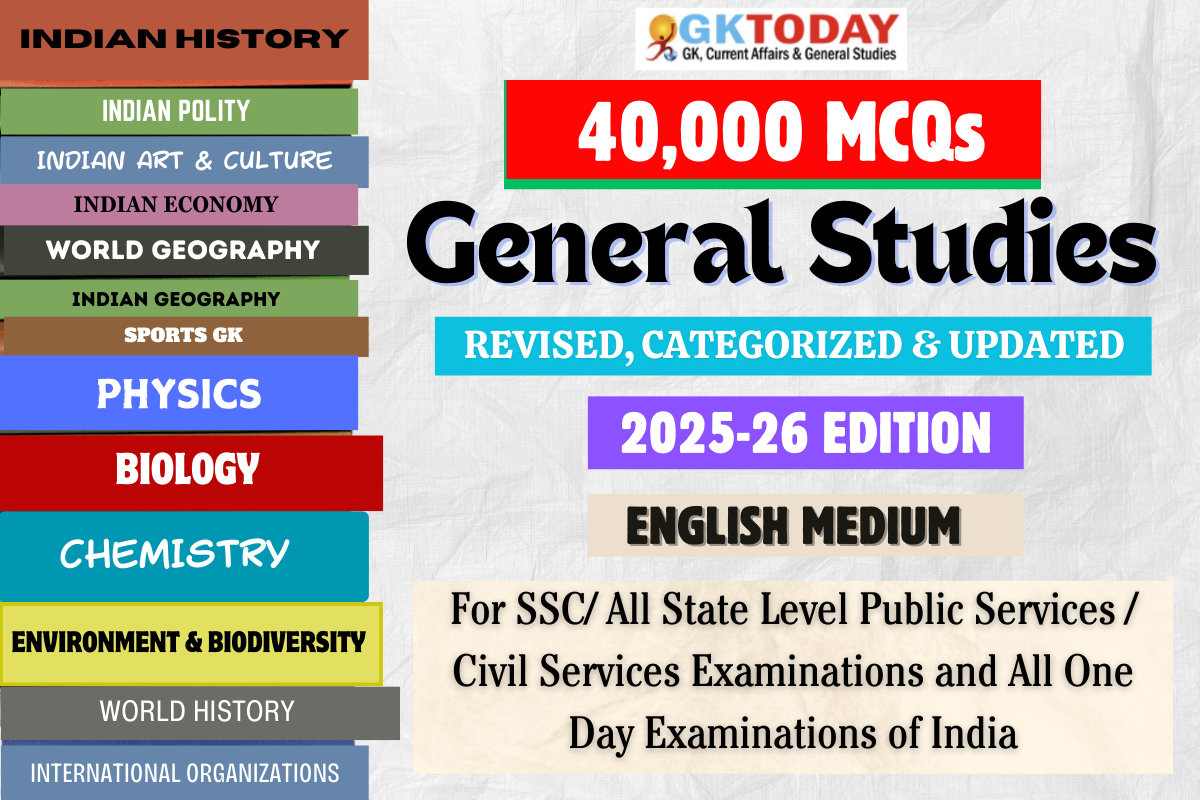Indian Economy MCQs
Indian Economy Multiple Choice Questions (MCQs) for SSC, State and all One Day Examinations of India. Objective Questions on Indian Economy for competitive examinations.
1. In which year first five year plan was launched?
[A] 1950
[B] 1951
[C] 1952
[D] 1953
Show Answer
Correct Answer: B [1951]
Notes:
The first five-year plan of India was launched in the year 1951, with the main focus on development of the primary sector. It was presented by the first Indian prime minister, Jawaharlal Nehru.
2. Which among the following is considered to be the best measure of an increase in a country’s economic efficiency?
[A] Increase in annual private investment
[B] Increase in real national income
[C] Increase in real per capita income
[D] Increase in net annual investment
Show Answer
Correct Answer: C [Increase in real per capita income]
Notes:
Per capita income is a measure of the average income earned per person in a given area (usually in a country) in a particular year. When this figure is adjusted for inflation, the real per capita income is obtained, which gives the best measure of an increase in a country’s economic efficiency.
3. Which among the following is a major qualitative control measure in India ?
[A] Bank Rate Policy
[B] Open market Operations
[C] ways and means advances
[D] Margin Requirements
Show Answer
Correct Answer: D [Margin Requirements]
Notes:
Qualitative or selective methods of credit control refers to those methods which limit the nature or variety of money supply rather than its quantity. Such methods include regulation of margin requirement, credit rationing, regulation of consumer credit and direct action.
4. Consider the following:
- Minor Irrigation Scheme: CCA less than 2000 Hectares
- Medium Irrigation Scheme : CCA more than 2000 Hectares but less than 10000 Hectares
- Major Irrigation Scheme : CCA more than 10000 Hectares
Which among the above statements is / are correct?
[A] Only 1 and 2 are correct
[B] Only 2 and 3 are correct
[C] all are correct
[D] all are incorrect
Show Answer
Correct Answer: C [all are correct]
Notes:
Various irrigation schemes in India were classified by the erstwhile planning commission into three parts viz. Minor, Medium and Major Irrigation schemes.
- Major irrigation Scheme: Major irrigation schemes are those schemes which have a Culturable Command Areas of More than 10,000 hectares.
- Medium irrigation Schemes: The Medium Irrigation Schemes have a CCA of 2,000-10,000 hectares.
- Minor Schemes: Those with Culturable command areas up to 2000 hectares.
Cultural command area is the basis for the design of water course and basis for the design of an irrigation project. It is the proportion of the Gross Command Area which is Culturable and cultivable.
5. The most active segment of the Money Market in India is which one of the following?
[A] Call Money / Notice Money Market
[B] Repo / Reverse Repo
[C] Commercial Paper (CP)
[D] Certificate of Deposit (CD)
Show Answer
Correct Answer: A [Call Money / Notice Money Market]
Notes:
Call Money / Notice Money Market is the most active segment of the money market in India.
6. What effect would an increase in external commercial borrowings have on India’s external debt?
[A] It will increase
[B] It will decrease
[C] It will remain unaffected
[D] It may either increase or decrease
Show Answer
Correct Answer: A [It will increase]
Notes:
An increase in external commercial borrowings leads to a corresponding rise in the country’s external debt. External commercial borrowings are essentially loans acquired by Indian entities from foreign sources. Any rise in such borrowings inflates the external debt directly. It is because, these borrowings add up to the total owed amount by the country to external or foreign entities, thereby increasing the external debt.
7. Which Public Sector Giant issued world’s first Indian green masala bond?
[A] ONGC
[B] NTPC
[C] IOCL
[D] CIL
Show Answer
Correct Answer: B [ NTPC ]
Notes:
State-owned energy major National Thermal Power Corporation (NTPC) raised almost Rs 2,000 crores with the launch of its ‘Green Masala Bond’ on the London Stock Exchange (LSE). NTPC’s bond issue has been described as the first-ever Indian quasi-sovereign to issue a Masala Bond.
8. Consider the following statements about the Asian Infrastructure Investment Bank (AIIB):
- India has signed as well as ratified the articles to become the member state of the bank
- Its headquarters are located at Beijing, China
- It aims at providing Sovereign-backed Financing as well as Non-sovereign-backed Financing for Projects.
Which of the above statements is/are correct?
[A] 1 Only
[B] 1 & 2 Only
[C] 2 Only
[D] 1, 2 & 3
Show Answer
Correct Answer: D [1, 2 & 3]
Notes:
All given statements are correct
9. With reference to the International Trade, the International Harmonized System (HS) of goods is maintained by __:
[A] World Trade Organization
[B] World Customs Union
[C] UNCTAD
[D] None of them
Show Answer
Correct Answer: B [World Customs Union]
Notes:
The WCO maintains the international Harmonized System (HS) goods nomenclature, and administers the technical aspects of the World Trade Organization (WTO) Agreements on Customs Valuation and Rules of Origin. World Customs Organization (WCO) is an intergovernmental organization headquartered in Brussels, Belgium.
10. Which of the following is the purchase of shares and bonds of Indian companies by Foreign Institutional Investors?
[A] FDI
[B] Portfolio Investment
[C] NRI Investment
[D] Foreign Indirect Investment
Show Answer
Correct Answer: D [Foreign Indirect Investment]
Notes:
Foreign indirect investments involve corporations, financial institutions and private investors buying stakes or positions in foreign companies that trade on a foreign stock exchange.

